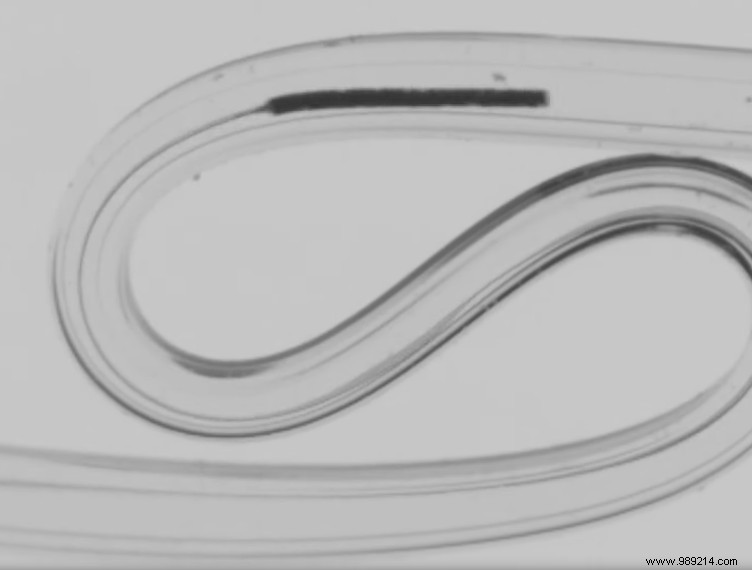Swiss researchers have developed a new technique for exploring the body using blood vessels. Based on an electronic device thinner than a simple hair, this method could be a source of hope for the treatment of brain tumors that are usually difficult to reach.
Lucio Pancaldi and Selman Sakar are respectively doctoral student and assistant professor at the Swiss Federal Institute of Technology Lausanne (EPFL). In their article published in the journal Nature Communications on December 22, 2020, the duo explains that they want to exploit hydrokinetic energy, that is to say the mechanical energy resulting from the movement of liquids. The goal? Reach some hard-to-reach places in the human body, including the brain, without using invasive methods. According to the researchers, most of an organ such as the brain remains inaccessible today. Indeed, the existing tools are still too voluminous. Thus, it is impossible to navigate the cerebral vascular system without risking causing tissue damage. Usually, doctors push and twist guidewires before inserting catheters.
EPFL scientists then designed a microscopic device , as shown in the video to watch at the end of the article. This can insert into the arterioles (small arteries), or even the capillaries, the finest blood vessels and last vascular ramifications. In addition, the insertion is done easily and quickly.

The scientists of the study explain that the device in question does not replace the classic catheter, but complements it. This consists of a tip and an ultra-flexible body made of biocompatible polymers. The researchers used the image of the "fishing line" and the "fish hook" to illustrate how it works. All you have to do is hold the end of the electronic device and let the flow of blood lead it to the vessels peripheral blood. It is also possible to choose its path by gently twisting the magnetic end of the device. The walls of the blood vessels are not at risk since no mechanical force is exerted. In addition, the rapidity of action of this method reduces the intervention time to a few minutes instead of several hours. Let's also mention the fact that the control of the device (activation and direction) is done by computer.
The study directors imagine that a robot surgeon could very well guide their device autonomously. The robot will simply need a "map" of the vasculature provided by an MRI. If we are talking about artificial intelligence here, researchers believe that a simple computer program could be an alternative, allowing easier manual operation.
The first phase of testing was carried out on the vascular system of a rabbit ear. From now on, it is a question of moving on to the next step:carrying out the same experiment directly on animals.